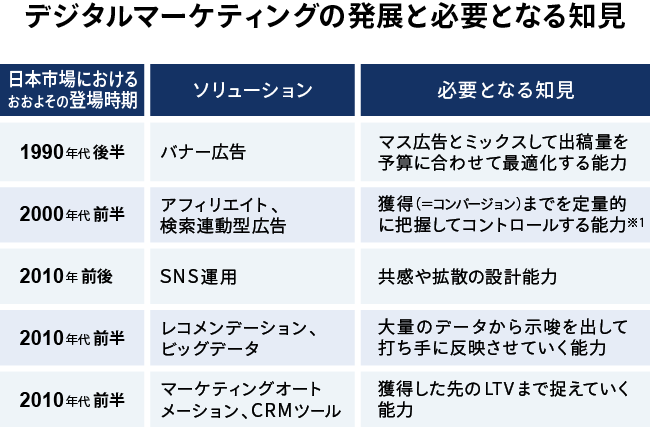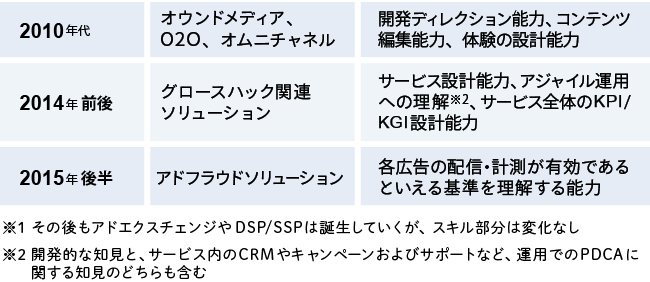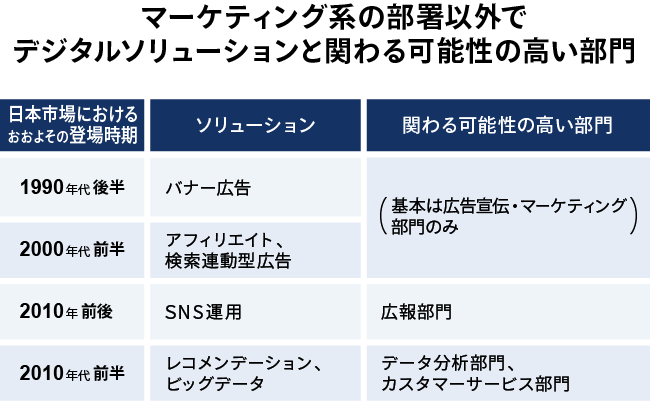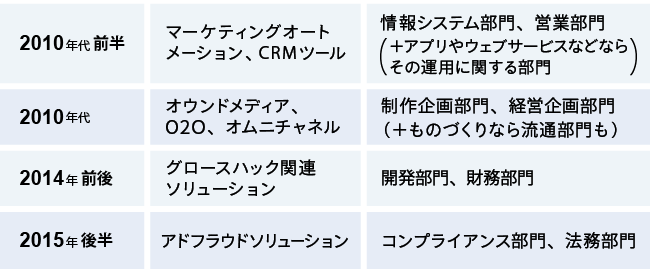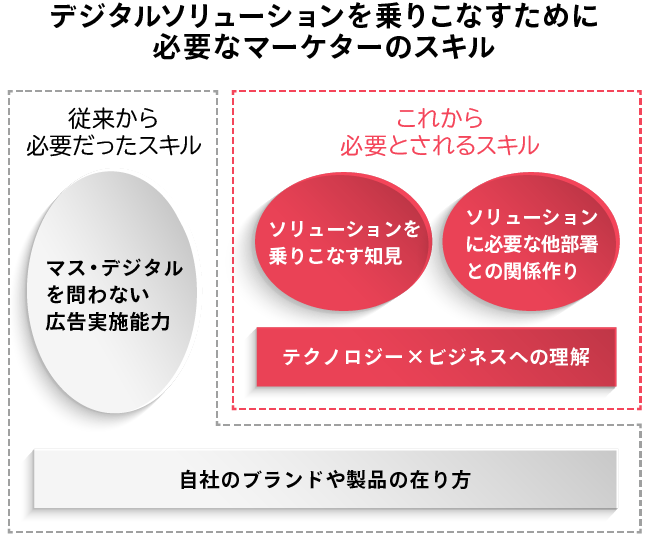My name is Katayama from Dentsu Inc.'s Business Development & Activation Bureau. In 2015, I authored a series of columns covering everything from app planning and production to monetization as a business, focusing discussions on growth hacking concepts, service design, and UX.
Three years have passed since then, and the meaning of "marketing" and the role of "marketers" have rapidly expanded due to digital technology and the solutions it enables. I myself strongly felt the need to shift my perspective toward business and product development.
Therefore, this time, I will deliver a series sharing the insights I have cultivated over the years, aimed at marketers and personnel responsible for new business development and product development.
Note that in this series, "marketer" refers not to specialists executing or operating specific solutions, nor to those responsible for only specific domains. Instead, it denotes the person in charge or responsible for designing and executing the integrated communication strategy ( ) for the company itself and its products/services.
The number of solutions increases the necessary expertise
When TV commercials emerged during the era dominated by newspaper ads, the phenomenon was simply an increase in the means available for moving from initial awareness to customer acquisition. While the nature and content of the advertising materials and slots naturally differ, the basic workflow from submission to publication remains the same.
However, the numerous solutions emerging through digital technology require distinct knowledge (skills and approaches) to understand and utilize effectively, necessitating keeping pace with each one.
First, we introduce the changes in expertise that the development of digital marketing and the penetration of its solutions bring to marketers.
While not covering every solution, the table below summarizes representative solutions that emerged in marketing communications and the required expertise.
In the late 1990s to early 2000s, when banner ads and search-linked ads emerged, it was sufficient to understand that digital tools could visualize "how much reach was achieved," "whether clicks occurred," and "whether conversions were obtained."
However, in the early 2010s, the emergence of big data technologies and the concept of recommendation systems necessitated the ability to understand how to manage data and what could be achieved through it.
Furthermore, during the 2010s, companies began creating their own owned media and connecting physical and digital channels through omnichannel strategies. This also necessitated development knowledge to communicate effectively with engineers.
Moreover, solutions like banner ads and search-linked ads that emerged about 20 years ago, as well as the currently hot ad fraud countermeasures, remain crucial digital solutions today despite their cycles of rise and fall and changes in format.
In other words, it's clear that the required skills and multifaceted thinking have only increased.
The reality of digital transformation that marketing departments alone cannot handle
Beyond the increase in knowledge, another perspective is how we interact with other departments. Previously, digital solutions were handled entirely within the marketing department. Now, however, many departments are involved.
Banner ads and search-linked ads can still be managed entirely by the advertising department, as before. However, official social media accounts, for example, also represent the company's personality and stance, requiring a public relations perspective.
Furthermore, growth hacking solutions require agile development teams capable of quickly implementing strategies, and accurate instructions must be given to development companies.
As shown in the table above, excluding back-office departments like general affairs and human resources, many departments are now connected to digital solutions.
If incorporating emerging technologies like blockchain, artificial intelligence, or quantum computing—which are gaining significant attention—into marketing solutions, it will likely require convincing the R&D department and even executive management.
Since marketing itself has become a driving force for business activities, it is difficult for marketers who say, "I can't think about other departments" or "I don't understand business planning at all" to promote digital-driven marketing.
Understanding technology and business is becoming the common language for future marketers.
I hope you now understand that for marketers to effectively utilize the latest digital technologies in communication design and execution, they need not only the necessary expertise but also an awareness of the increasing number of departments involved.
Understanding digital solutions as tools for advertising communication and defining the essence of one's own brand and products are now fundamental. Beyond this, you can likely envision how understanding technology and business will become the common language for all-around marketers going forward.
The consideration for other departments highlighted here is also something those developing digital solution products must think about. Since these solutions can be viewed as IT investments and may alter the structure of existing systems, development must focus not just on "awareness" or "acquisition" concepts, but also on "how they contribute to the client's overall business."
If solutions can be provided that run parallel to business development from a company-wide perspective, it should also be possible to propose business models such as performance-based models, or models where the digital solution development side makes the investment and recovers it once profits are generated.
In this era, future installments will explore how marketers should perceive business and technology.
Stay tuned as I share real-world examples of the business and product development I have undertaken (and continue to undertake) as a bureau member in Dentsu Inc.'s new business division.

